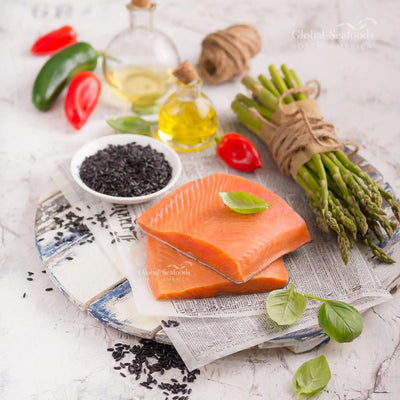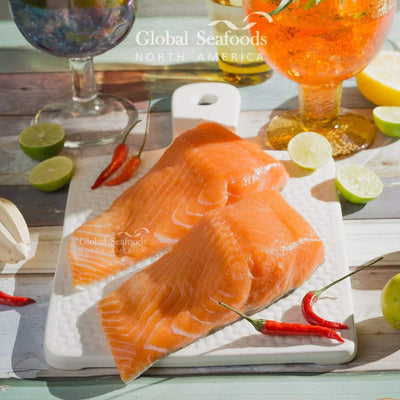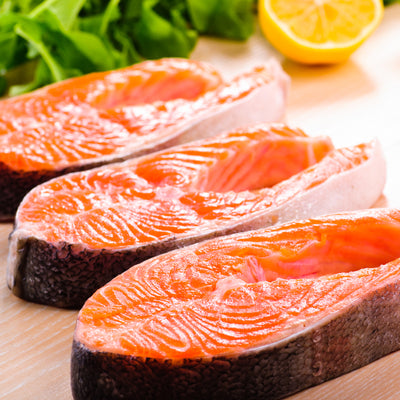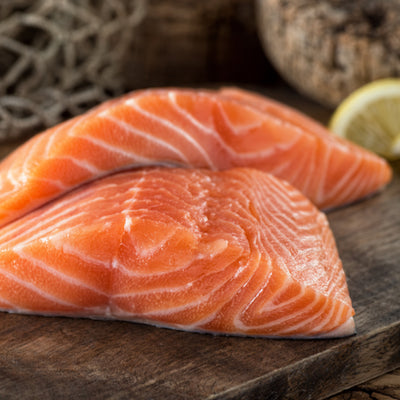How to Defrost Salmon and Other Fish Safely and Efficiently

How to Defrost Salmon and Other Fish Safely and Efficiently
Frozen fish is a convenient and cost-effective way to enjoy high-quality seafood. Whether you’ve stocked up on frozen salmon or other fish, knowing how to thaw it properly is essential for maintaining its flavor, texture, and safety. Improper thawing can lead to spoilage, loss of nutrients, or even foodborne illnesses.
This guide covers the safest and most effective ways to defrost salmon and fish, including refrigerator thawing, microwave thawing, and icy water thawing. With these methods, you’ll be ready to prepare delicious seafood dishes in no time.
Why Properly Thawing Fish is Crucial
Thawing fish correctly ensures its safety and quality. Improper thawing, such as leaving fish on the counter or using hot water, can expose it to unsafe temperatures where bacteria thrive. According to the FDA, fish should always be thawed at temperatures below 40°F to avoid contamination.
Proper thawing also preserves the delicate texture and flavor of fish, making it a key step in meal preparation. Whether you’re preparing a gourmet dish with premium caviar or a simple baked salmon, safe thawing is non-negotiable.
Refrigerator Thawing: The Safest Method
Refrigerator thawing is widely regarded as the safest way to defrost fish. This method allows the fish to thaw slowly and evenly, keeping it at a safe temperature throughout the process.
Steps for Refrigerator Thawing:
- Keep the Fish Sealed: Leave the fish in its original vacuum-sealed packaging or place it in a resealable bag.
- Place on a Tray: Use a tray or plate to catch any potential drips.
- Allow Time: Thawing typically takes 6–12 hours, depending on the thickness of the fish.
Pro Tips:
- Plan ahead and start thawing the night before you cook.
- Keep the fish on a lower refrigerator shelf to prevent cross-contamination.
- Once thawed, use the fish within 1–2 days.
For top-quality fish that thaws beautifully, explore our featured seafood selection.
Microwave Thawing: For Quick Defrosting
If you’re short on time, microwave thawing offers a quick solution. However, this method requires care to avoid uneven thawing or accidentally cooking the fish.
Steps for Microwave Thawing:
- Select Defrost Mode: Set your microwave to the defrost function and input the fish’s weight.
- Check Frequently: Pause every 30–60 seconds to check the fish and flip it over.
- Stop While Icy: Stop defrosting when the fish is pliable but still slightly icy in the center.
Important Tips:
- Avoid over-thawing, which can cook the edges of the fish.
- For best results, use the microwave only for small fillets or portions.
Icy Water Thawing: A Balanced Approach
Icy water thawing is an excellent option for those who want faster results than refrigerator thawing without the risks of microwave defrosting.
Steps for Icy Water Thawing:
- Prepare Cold Water: Fill a large bowl or pot with cold water. Avoid using warm or hot water.
- Bag the Fish: Place the fish in a sealed, watertight bag to prevent it from absorbing water.
- Submerge and Wait: Submerge the fish in the water, weighting it down if necessary.
- Change Water Regularly: Replace the water every 20–30 minutes to keep it cold.
- Check for Softness: Thin fillets may thaw in 30 minutes, while thicker cuts could take 1–2 hours.
For premium options like dry-aged fish, icy water thawing ensures perfect texture and flavor.
How Long Can Fish Stay in the Fridge?
Once thawed, fish should be cooked within 1–2 days to ensure optimal freshness and safety. Cooked fish can be stored in an airtight container in the refrigerator for up to 4 days.
Quick Tip: Always label your fish with the thawing date to avoid confusion.
How to Tell if Thawed Fish is Safe to Eat
After thawing, it’s crucial to check the fish for signs of spoilage. Here’s how:
- Smell: Fresh fish has a mild aroma. If it smells sour, ammonia-like, or overly “fishy,” it’s spoiled.
- Touch: The flesh should be firm and spring back when pressed. Slimy or mushy fish is a sign of spoilage.
- Appearance: Look for bright, translucent flesh. Dull or discolored spots may indicate that the fish is no longer fresh.
When in doubt, discard fish that shows any of these warning signs.
Common Mistakes to Avoid When Thawing Fish
- Thawing on the Counter: Leaving fish at room temperature exposes it to bacteria.
- Using Hot Water: High temperatures can cause uneven thawing and partially cook the fish.
- Skipping the Bag: Direct contact with water can ruin the texture of the fish by making it soggy.
FAQs About Defrosting Salmon and Fish
Q: Can I refreeze fish after thawing?
A: Refreezing is possible if the fish was thawed in the refrigerator and hasn’t been out for more than two days. However, the texture may degrade.
Q: What’s the best method for defrosting fish quickly?
A: Icy water thawing offers a faster solution than refrigerator thawing while preserving texture better than microwave thawing.
Q: Can I cook fish from frozen?
A: Yes, fish can be cooked directly from frozen. Just adjust the cooking time and use methods like baking or steaming.
Conclusion
Defrosting salmon and other fish safely is a crucial step in creating delicious seafood dishes. Whether you choose the steady refrigerator method, the fast microwave option, or the balanced icy water approach, each technique has its unique benefits.
Elevate your seafood experience with high-quality products from our collections, including red caviar, sturgeon black caviar, and king crab.
For more seafood tips and recipes, visit our YouTube channel.
Also in News

How to Make Sea Bream Sushi With Dry-Aged Tuna & Crab Roll — Step-by-Step With Chef Joshua
A complete guide to making Sea Bream sushi at home, including filleting, curing, slicing, and building a Dry-Aged Tuna & Crab sushi roll. Chef Joshua shares professional tips for restaurant-quality results.

Boiled Crab for Game Night: Everything You Need for a Perfect Seafood Party
Take your game night to the next level with a Boiled crab party. Learn the best recipes, cooking tips, and hosting hacks for a memorable seafood feast.

Boiled Crab for Date Night: A Romantic Guide to the Perfect Seafood Feast
Make your next date night unforgettable with a romantic Boiled crab experience. This guide covers everything you need to know, from ambiance to the best crab varieties.








